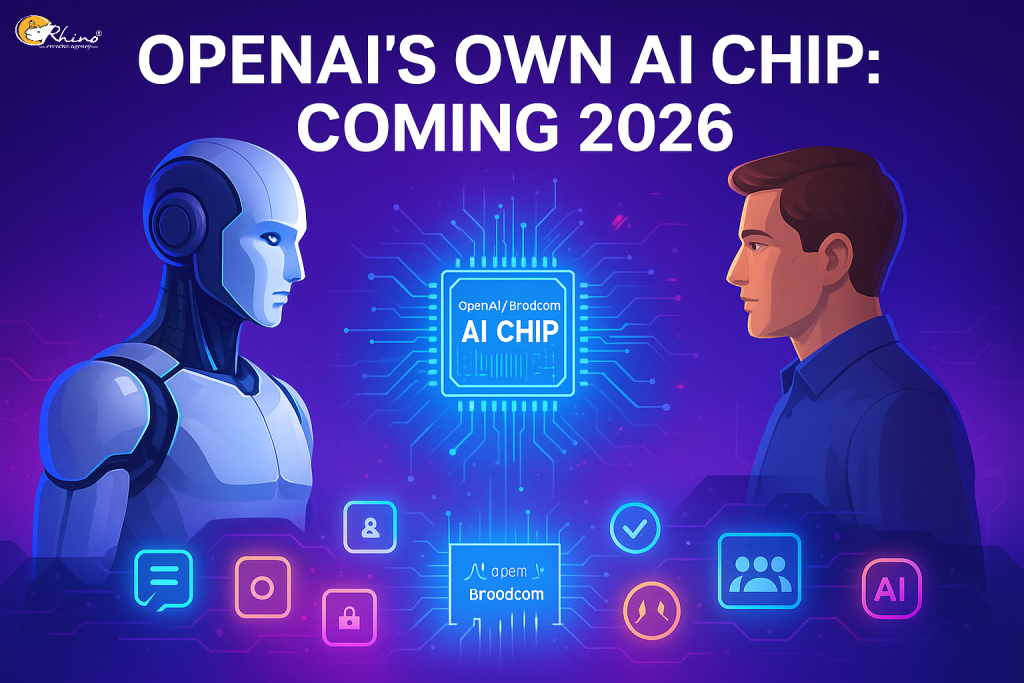In early September 2025, the Financial Times revealed that OpenAI is preparing to launch its very first in-house artificial intelligence chip in collaboration with U.S. semiconductor giant Broadcom, with mass production expected in 2026. According to FT insiders, the chip will be used exclusively for internal operations, rather than offered commercially .
This move signifies a strategic shift for OpenAI — traditionally reliant on third-party GPU suppliers such as Nvidia and AMD via Microsoft’s Azure. Reports indicate that the partnership with Broadcom is aimed at diversifying its compute supply chain, optimizing costs, and gaining performance advantages .
Broadcom CEO Hock Tan has confirmed that the company secured more than $10 billion in AI infrastructure orders from a new, unnamed customer, widely believed to be OpenAI. These orders encompass custom-designed AI accelerators (XPUs) and high-bandwidth memory (HBM) solutions. Broadcom anticipates robust AI revenue growth in fiscal 2026, buoyed by this major deal .
Technical Backbone and Manufacturing
While FT’s original report remains behind a paywall, corroborating sources like Reuters, Data Center Dynamics, and The Register affirm that OpenAI will partner with Broadcom to design these chips and subsequently manufacture them at TSMC (Taiwan Semiconductor Manufacturing Company) .
This approach mirrors strategies employed by other AI-intensive tech giants — including Google, Amazon, and Meta — which have also pursued custom silicon to power their evolving infrastructure needs .
Analysis: What This Means for OpenAI and the Broader AI Ecosystem
1. Greater Control, Lower Costs
Designing proprietary AI chips enables OpenAI to better control supply, reduce reliance on Nvidia (whose GPUs are expensive and in high demand), and potentially lower long-term operational costs .
2. Performance Tailoring
By collaborating with Broadcom, OpenAI can fine-tune chip architectures specifically for its model training and inference workloads — potentially optimizing throughput, latency, and energy efficiency to its exact needs .
3. Hyperscaler Status Achieved
An order of over $10 billion in AI infrastructure places OpenAI firmly among hyperscaler ranks — matching the infrastructure scale traditionally seen only at the likes of Meta, AWS, and Microsoft .
4. Internal Use: A Strategic Beginning
The decision to use the chips solely internally demonstrates OpenAI’s intent to first solidify its infrastructure. Whether it will later offer such chips commercially remains uncertain, but the current focus is clearly on powering its own services.
5. Market Impact
Announcements of this magnitude rapidly ripple through markets. Broadcom’s stock, for instance, jumped as much as 11–14%, reflecting investor optimism in its AI growth trajectory .
Context: Broadcom, TSMC, and the AI Silicon Landscape
Broadcom is a trusted partner for custom accelerator designs — having contributed to Google’s TPU architecture in past collaborations. For OpenAI, leveraging Broadcom’s expertise allows it to focus on architectural innovation while delegating production-level design components .
TSMC’s participation underscores the use of advanced 3-nm-class (e.g., N3-series) process technologies — aligning with industry standards for high-performance AI silicon .
Conclusion
OpenAI’s move to develop and mass-produce its own AI chip through a partnership with Broadcom, set to go live in 2026, marks a monumental strategic pivot. By taking ownership over hardware, OpenAI aims to bolster performance, reduce dependencies, and position itself among hyperscalers with robust infrastructure autonomy. While the chips will initially serve internal purposes, the long-term implications span cost efficiencies, technological independence, and new competitive dynamics in AI infrastructure.
Let me know if you’d like a comparative breakdown between OpenAI’s approach and other in-house chip initiatives like Google’s TPUs or Meta’s AI silicon!

